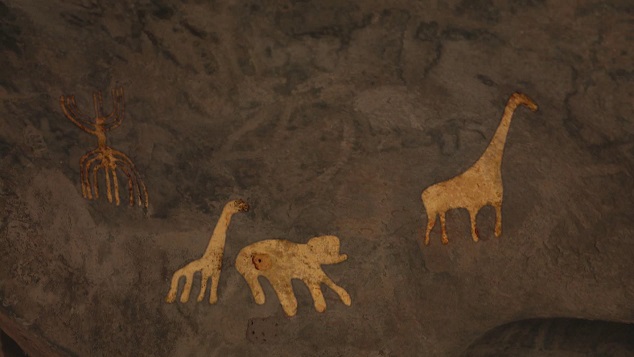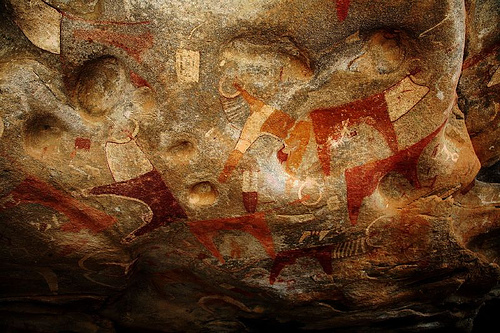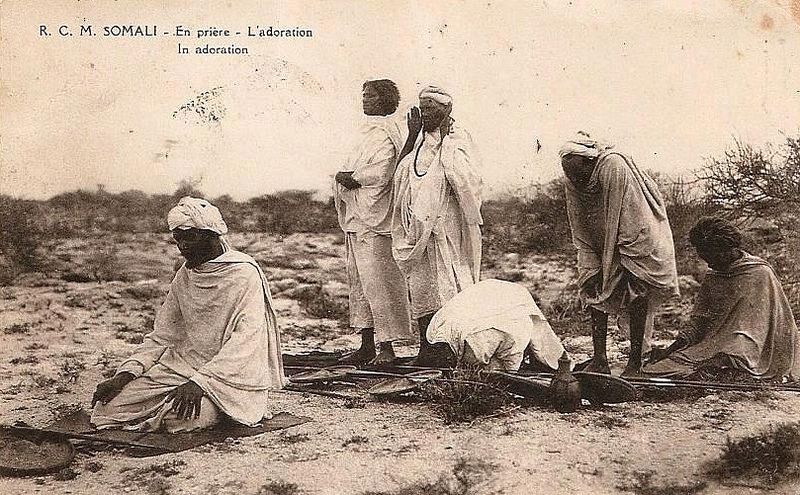|
Law Of Somaliland
The Constitution of the Republic of Somaliland (; ) is the supreme source of national law of Somaliland, an unrecognised state considered to be part of Somalia by the international community, adopted by the Houses of the Parliament of Somaliland on 30 April 2000. The constitution was approved in a referendum held on May 31, 2001, when 97% of the voters voted in its favour. Its re-published version consists of a preamble (Arar) and five main chapters (Qaybo) each of which is subdivided into parts (Xubno). There is now a total of 130 articles (Qodobo) as compared to the previous 156 articles. History Somaliland has had other constitutional documents of historical importance which range from the international treaties signed by the various Somaliland communities with the British government, and the various constitutional arrangements prior to independence in 1960 to the Declaration of Re-assertion of sovereignty in 1991 (in Burao) at one of the earliest grand conferences of th ... [...More Info...] [...Related Items...] OR: [Wikipedia] [Google] [Baidu] |
Republic Of Somaliland
Somaliland, officially the Republic of Somaliland, is an unrecognised country in the Horn of Africa. It is located in the southern coast of the Gulf of Aden and bordered by Djibouti to the northwest, Ethiopia to the south and west, and Somalia to the east. Its claimed territory has an area of , with approximately 6.2 million people as of 2024. The capital and largest city is Hargeisa. Various Somali Muslim kingdoms were established in the area during the early Islamic period, including in the 14th to 15th centuries the Zeila-based Adal Sultanate. In the early modern period, successor states to the Adal Sultanate emerged, including the Isaaq Sultanate which was established in the middle of the 18th century. In the late 19th century, the United Kingdom signed agreements with various clans in the area, establishing the Somaliland Protectorate, which was formally granted independence by the United Kingdom as the State of Somaliland on 26 June 1960. Five days later, the Stat ... [...More Info...] [...Related Items...] OR: [Wikipedia] [Google] [Baidu] |
Somaliland Constitutional Referendum, 2001
A constitutional referendum was held in Somaliland on 31 May 2001. The referendum was held on a draft constitution that affirmed Somaliland's independence from Somalia. 99.9% of eligible voters took part in the referendum and 97.1% of them voted in favour of the constitution. The ratification of the constitution confirmed Somaliland's independence, strengthened the executive branch and confirmed Islam as the "national faith". Most importantly, it endorsed multiparty elections at all levels of government through universal suffrage paving way for democratic rule. However the referendum was opposed by the Government of Somalia and did not lead to any international recognition. Background In May 1991 after the fall of the military dictator of Somalia, Siad Barre, the Somali National Movement declared the independence of Somaliland. In 1993 an executive presidency was set up with a bicameral legislature and Muhammad Haji Ibrahim Egal was elected president by a council of elder ... [...More Info...] [...Related Items...] OR: [Wikipedia] [Google] [Baidu] |
Constitutions Of States With Limited Recognition
A constitution is the aggregate of fundamental principles or established precedents that constitute the legal basis of a polity, organization or other type of entity, and commonly determines how that entity is to be governed. When these principles are written down into a single document or set of legal documents, those documents may be said to embody a ''written constitution''; if they are encompassed in a single comprehensive document, it is said to embody a ''codified constitution''. The Constitution of the United Kingdom is a notable example of an ''uncodified constitution''; it is instead written in numerous fundamental acts of a legislature, court cases, and treaties. Constitutions concern different levels of organizations, from sovereign countries to companies and unincorporated associations. A treaty that establishes an international organization is also its constitution, in that it would define how that organization is constituted. Within states, a constitution defin ... [...More Info...] [...Related Items...] OR: [Wikipedia] [Google] [Baidu] |
Referendum
A referendum, plebiscite, or ballot measure is a Direct democracy, direct vote by the Constituency, electorate (rather than their Representative democracy, representatives) on a proposal, law, or political issue. A referendum may be either binding (resulting in the adoption of a new policy) or advisory (functioning like a large-scale opinion poll). Etymology 'Referendum' is the gerundive form of the Latin language, Latin verb , literally "to carry back" (from the verb , "to bear, bring, carry" plus the inseparable prefix , here meaning "back"Marchant & Charles, Cassell's Latin Dictionary, 1928, p. 469.). As a gerundive is an adjective,A gerundive is a verbal adjective (Kennedy's Shorter Latin Primer, 1962 edition, p. 91.) not a noun, it cannot be used alone in Latin, and must be contained within a context attached to a noun such as , "A proposal which must be carried back to the people". The addition of the verb (3rd person singular, ) to a gerundive, denotes the idea of nece ... [...More Info...] [...Related Items...] OR: [Wikipedia] [Google] [Baidu] |
Hargeisa
Hargeisa ( ; ; ) is the capital and largest city of the Republic of Somaliland, a ''List of states with limited recognition, de facto'' sovereign state in the Horn of Africa, still considered internationally to be part of Somalia. It is also the regional capital of the Maroodi Jeex region of Somaliland. Hargeisa was founded as a watering and trading stop between the coast and the interior by the Isaaq Sultanate. Initially it served as a watering well for the vast livestock of the Isaaq clan that inhabited that specific region and later were joined by other Isaaq clans that currently inhabit Hargeisa. In 1960, the Somaliland Protectorate gained independence from the United Kingdom and as scheduled united days later with the Trust Territory of Somaliland (former Italian Somaliland) to form the Somali Republic on 1 July.Encyclopædia Britannica, ''The New Encyclopædia Britannica'', (Encyclopædia Britannica: 2002), p.835 Up to 90% of the city was destroyed during the Isaaq genoci ... [...More Info...] [...Related Items...] OR: [Wikipedia] [Google] [Baidu] |
Borama
Borama (, ) is the largest city of the northwestern Awdal region of Somaliland. The commercial seat of the province, it is situated near the border with Ethiopia. During the Middle Ages, Borama was ruled by the Adal Sultanate. It later formed a part of the British Somaliland protectorate in the first half of the 20th century. According to a 2023 estimate the city had a population of 300,000, with the broader district having a population of 398,609 according to a UN 2014 population estimate. making it one of the largest cities inside Somaliland. It has been a leading example in community organizing, having been the first area in Somaliland to adopt a self-help scheme in the wake of the civil war. Etymology The name Borama comes from the word ''booraan'' (pl. ''booraamo''), which is a deep hole or geological depression (e.g. basin, valley). The city was named after the valleys in the surrounding areas, with Borama meaning place of valleys. History As with several nearby town ... [...More Info...] [...Related Items...] OR: [Wikipedia] [Google] [Baidu] |
State Of Somaliland
Somaliland, officially the State of Somaliland (), was an independent country in the territory of the present-day unilaterally declared Republic of Somaliland, which regards itself as its legal successor. It existed on the territory of former British Somaliland for five days between 26 June 1960 and 1 July 1960, when it merged with the formerly Italian administered Trust Territory of Somaliland to form the Somali Republic. History Initially the British government planned to delay the protectorate of British Somaliland independence in favour of a gradual transfer of power. The arrangement would allow local politicians to gain more political experience in running the protectorate before official independence. However, strong pan-Somali nationalism and a landslide victory in the earlier elections encouraged them to demand independence and unification with the Trust Territory of Somaliland under Italian Administration. The British stated that it would be prepared to grant indepe ... [...More Info...] [...Related Items...] OR: [Wikipedia] [Google] [Baidu] |
Somali Republic
The Somali Republic (; ; ) was formed by the union of the Trust Territory of Somaliland (formerly Italian Somaliland) and the State of Somaliland (formerly British Somaliland). A government was formed by Abdullahi Issa Mohamud and Muhammad Haji Ibrahim Egal and other members of the trusteeship and protectorate administrations, with Haji Bashir Ismail Yusuf as President of the Somali National Assembly and Aden Abdullah Osman Daar as President of the Somali Republic. On 22 July 1960, Daar appointed Abdirashid Ali Shermarke as prime minister. On 20 July 1961 and through a popular referendum, Somalia ratified a new constitution, which was first drafted in 1960. The new constitution was rejected by Somaliland. The administration lasted until 1969, when the Supreme Revolutionary Council (SRC) seized power in a bloodless coup and renamed the country the Somali Democratic Republic. History Popular demand compelled the leaders of Italian Somaliland and British Somaliland ... [...More Info...] [...Related Items...] OR: [Wikipedia] [Google] [Baidu] |
Trust Territory Of Somalia
The Trust Territory of Somaliland, officially the Trust Territory of Somaliland under Italian Administration (), was a United Nations Trust Territory from 1950 to 1960, following the dissolution of the former British Military Administration. It was administered by Italy before gaining independence. It covered most of present-day Somalia and its capital was Mogadishu. Background In 1941, Italian Somaliland was occupied by British and South African troops as part of the East African Campaign of World War II. The British continued to administer the area until 1 April 1950. On that date, former Italian Somaliland was made a Trust Territory, as stipulated by United Nations General Assembly Resolution 289 of 21 November 1949. Return to Italian control The Somali Youth League (the main force in the country driving for independence) fiercely opposed the transfer of Somalia back to Italian control and accused Britain of bartering with the country in order to appease Italy. Of all ... [...More Info...] [...Related Items...] OR: [Wikipedia] [Google] [Baidu] |
Burao
Burao, also spelt Bur'o or Bur'ao (; , , ), is the capital of the Togdheer region and the second largest city in Somaliland. Burao was the site of the Somaliland Declaration of Independence, declaration of an independent Somaliland on 18 May 1991. Etymology The word ''burco'' describes open, elevated land which has soft/rich soil, with the Burao area being considered fertile. History The city originated as a well named Ceel-Gooni in the late 18th century used by nomads from the surrounding area. The town subsequently grew around the well. Due to the availability of water along the dry valley, Burao developed into a small inland market hub that linked the port of Berbera with the hinterland and offered trading facilities for the region's nomadic population. The settlement was later on burned to the ground by British Somaliland, British forces in 1900, with the modern settlement being re-established in 1910. For much of the 19th century, Burao served as the capital of the Habr ... [...More Info...] [...Related Items...] OR: [Wikipedia] [Google] [Baidu] |
Constitution
A constitution is the aggregate of fundamental principles or established precedents that constitute the legal basis of a polity, organization or other type of entity, and commonly determines how that entity is to be governed. When these principles are written down into a single document or set of legal documents, those documents may be said to embody a ''written constitution''; if they are encompassed in a single comprehensive document, it is said to embody a ''codified constitution''. The Constitution of the United Kingdom is a notable example of an ''uncodified constitution''; it is instead written in numerous fundamental acts of a legislature, court cases, and treaties. Constitutions concern different levels of organizations, from sovereign countries to companies and unincorporated associations. A treaty that establishes an international organization is also its constitution, in that it would define how that organization is constituted. Within states, a constitution ... [...More Info...] [...Related Items...] OR: [Wikipedia] [Google] [Baidu] |
Constitutional Law
Constitutional law is a body of law which defines the role, powers, and structure of different entities within a state, namely, the executive, the parliament or legislature, and the judiciary; as well as the basic rights of citizens and, in federal countries such as the United States and Canada, the relationship between the central government and state, provincial, or territorial governments. Not all nation states have codified constitutions, though all such states have a , or law of the land, that may consist of a variety of imperative and consensual rules. These may include customary law, conventions, statutory law, judge-made law, or international law. Constitutional law deals with the fundamental principles by which the government exercises its authority. In some instances, these principles grant specific powers to the government, such as the power to tax and spend for the welfare of the population. Other times, constitutional principles act to place limits on what ... [...More Info...] [...Related Items...] OR: [Wikipedia] [Google] [Baidu] |







